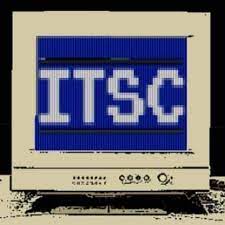“Chiseling Away” at a 20-Year Funding Gap With EHR Modernization
IHS, which operates across 34 states in some of the most remote, rural areas of the country, hasn’t received a technology budget increase in two decades, according to Thornbrugh.
“20 years ago, you didn’t have an iPhone,” he said. “You might have had a flip phone. That’s the last time we saw a technology budget increase.”
This funding plateau has created gaps in healthcare technology infrastructure across IHS facilities and tribal health systems. Thornbrugh said that the PATH EHR implementation will help “chisel away at the disparities we see in our communities with healthcare outcomes.”
“There is no healthcare without an EHR in our environments,” he said.
READ MORE: How does EHR optimization improve the patient experience?
Moving From Internal Development to Commercial Cloud
After consulting 400 of the 574 federally recognized tribes, IHS selected Oracle Health’s commercial EHR solution rather than upgrading its legacy Resource and Patient Management System. Thornbrugh acknowledged that government agencies may not be best positioned to develop complex healthcare software.
“We would ask questions years ago: Are we a software development company or not? And we’re not,” he said. “We didn’t feel like that was part of our strength, so we started looking at the commercial environment.”
The decision lets IHS tap into private sector investments in research and development, patient engagement tools and emerging technologies, rather than trying to re-create these capabilities.
Source: IHS.gov, “Indian Health Service Strategic Plan Fiscal Years 2025-2029,” 2025
Organization Change Management Is Central to the EHR Rollout
The PATH implementation emphasizes organizational change management through a comprehensive governance structure designed to outlast the initial rollout. For example, the Health Information Technology Enterprise Collaboration Group (ECG) includes 15 clinical domains with approximately 200 subject matter experts from tribal, federal and urban healthcare facilities.
“These are all potential EHR users,” Thornbrugh said. “They’re participating in build discussions and helping us make foundation decisions that we hope will make this a better system.”
The ECG will also be critical for ongoing change management.
“That committee structure and that governance system is able to handle anything the industry pushes on us,” he said. “What you really want is those users, that business owner, proactively and through partnership, guiding the maintenance of that system.”
IHS also created focus groups covering implementation best practices, data and analytics, and interoperability concerns. It also facilitates quarterly tribal consultations that draw roughly 200 participants and distributes monthly newsletters.
IHS Takes an “Enterprise” Approach to Implementation
The move to an enterprise system addresses challenges such as complexity, scalability and limited access to expertise. Many tribal healthcare facilities struggle to maintain optimal EHR functionality due to staffing limitations. For instance, Thornbrugh said that some sites manually enter laboratory results because they lack the technical staff to maintain system interfaces.
“Right now, I couldn’t hire an army of people to go out and do that across the country to keep the systems running or to make them consistent,” he said. “We’ve proved that you can’t train your way out of it, so we have to think our way out of it.”
Thornbrugh said he expects that a more central, enterpriselike approach to the rollout will facilitate consistent access to technical expertise and advanced functionality while enabling the development of standardized training materials.
Ongoing Health IT Innovation Depends on Future Federal Funding
IHS hopes to leverage PATH EHR’s capabilities for advanced analytics. The agency has 40 years of patient data that could support artificial intelligence applications to better understand health outcomes specific to Native American communities.
Thornbrugh also pointed out that Native Americans are underrepresented in medical research. Digital tools could help connect patients with relevant studies and improve participation rates in potentially lifesaving clinical trials.
However, these and other innovations hinge, in part, upon future funding for the initiative.
“If we’re not investing in that consistently over time, then this will be a blip where we see a huge investment, and then 20 years from now, we’re wondering why we’re behind again,” Thornbrugh said.
Beyond the immediate EHR deployment, IHS hopes to establish sustainable long-term funding models for ongoing technology advancement.
“My hope is that we’ve elevated that conversation at the national level, at the highest levels, to impact budgets,” Thornbrugh said. “Our generation owns this problem, and we’re not going to kick the can down the road. We’re going to solve it.”
UP NEXT: AI is the next stop on healthcare’s EHR optimization journey.
The post IHS’s PATH EHR Rollout Aims to Modernize Healthcare for Native Americans first appeared on TechToday.
This post originally appeared on TechToday.
